Spørteggbreen is a plateau glacier of 20 km2 just east of Jostedalsbreen ice cap.
Spørteggbreen has a diameter of 6 km. The glacier lies between 1750 and 1350 m and generally has a gentle slope. Only the northern part has steeper outlet glaciers. In the middle the ice is up to 200-250 m thick, covering more hilly terrain (Kennett, 1989).
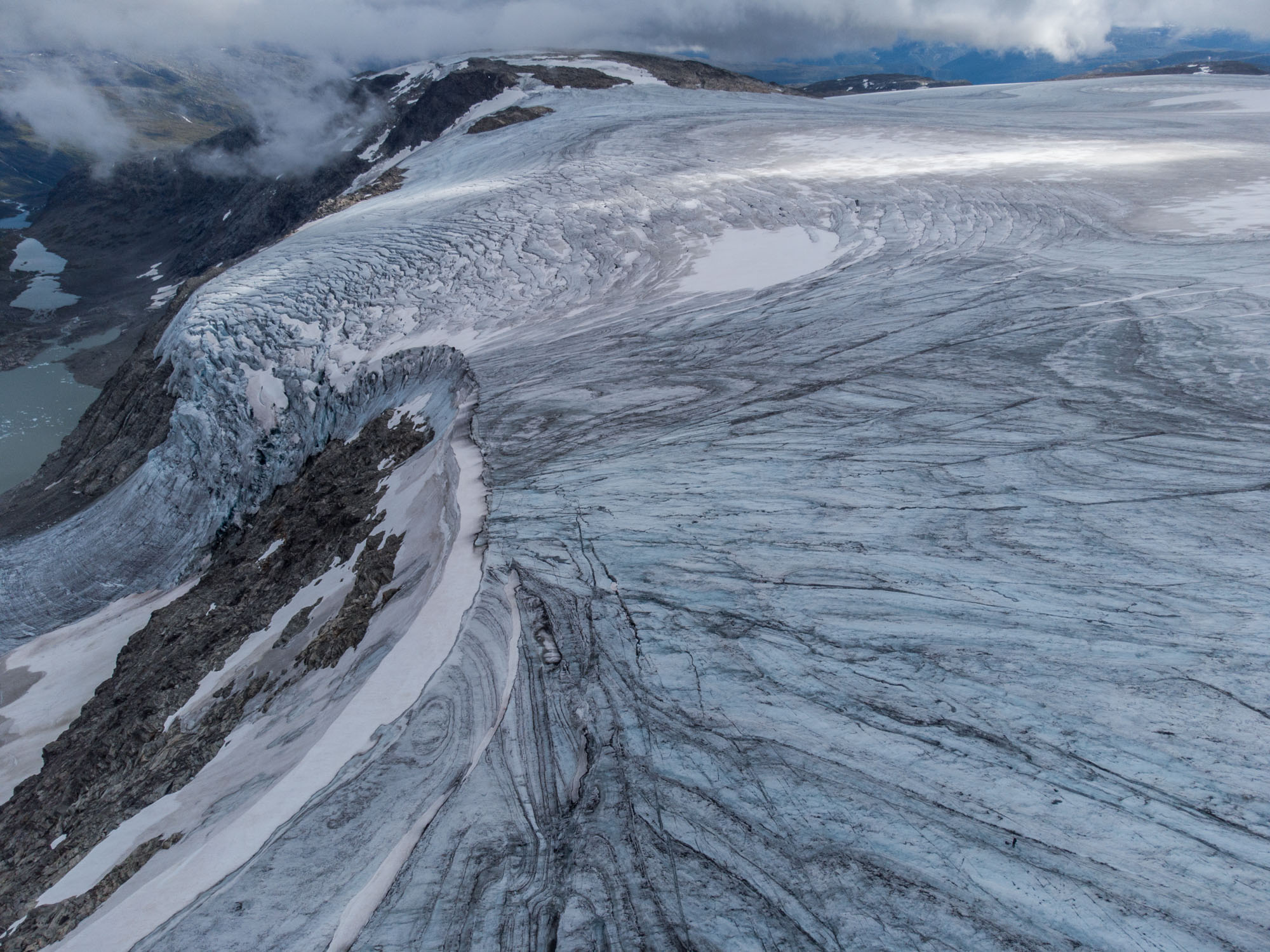
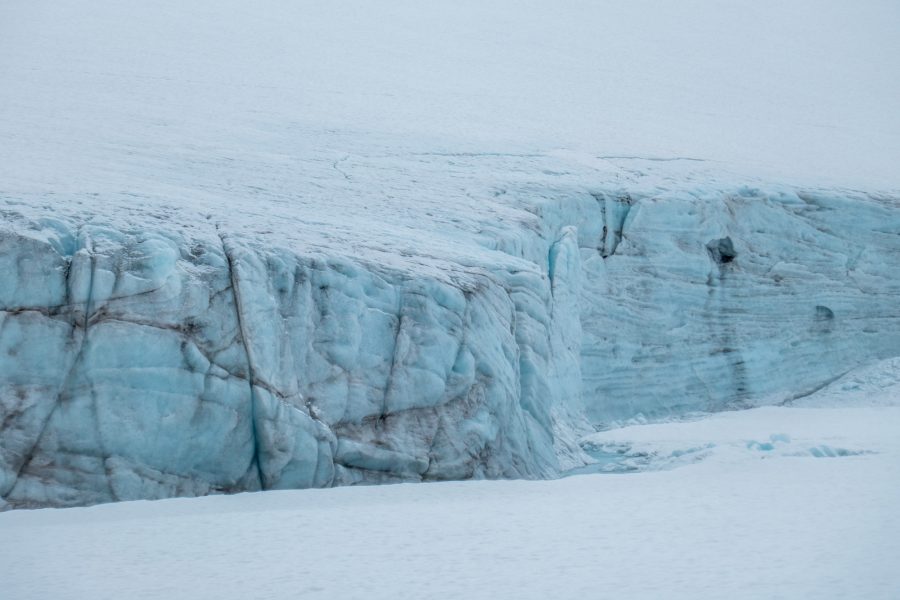
Like all glaciers, Spørteggbreen changes with climate. In warmer times glaciers are smaller, in cooler times larger. In the very cold climate of the Ice Ages they grew into extensive ice sheets that covered large parts of Europe and North America. The first of such glacials occurred 2.6 million years ago and initiated the Pleistocene, a geological epoch characterized by long, recurrent periods of ice sheet expansion. Spørteggbreen was simply a very small part of such an ice sheet.
The Pleistocene had at least 11 major and many minor glacials (cold phases). They lasted for 40,000 to 100,000 years each and were separated by mild phases called interglacials. These interglacials were much shorter, lasting only 10,000 to 15,000 years. In fact, we are in one right now: the most recent glacial period ended 11,700 years ago and we are in a mild interglacial since then.

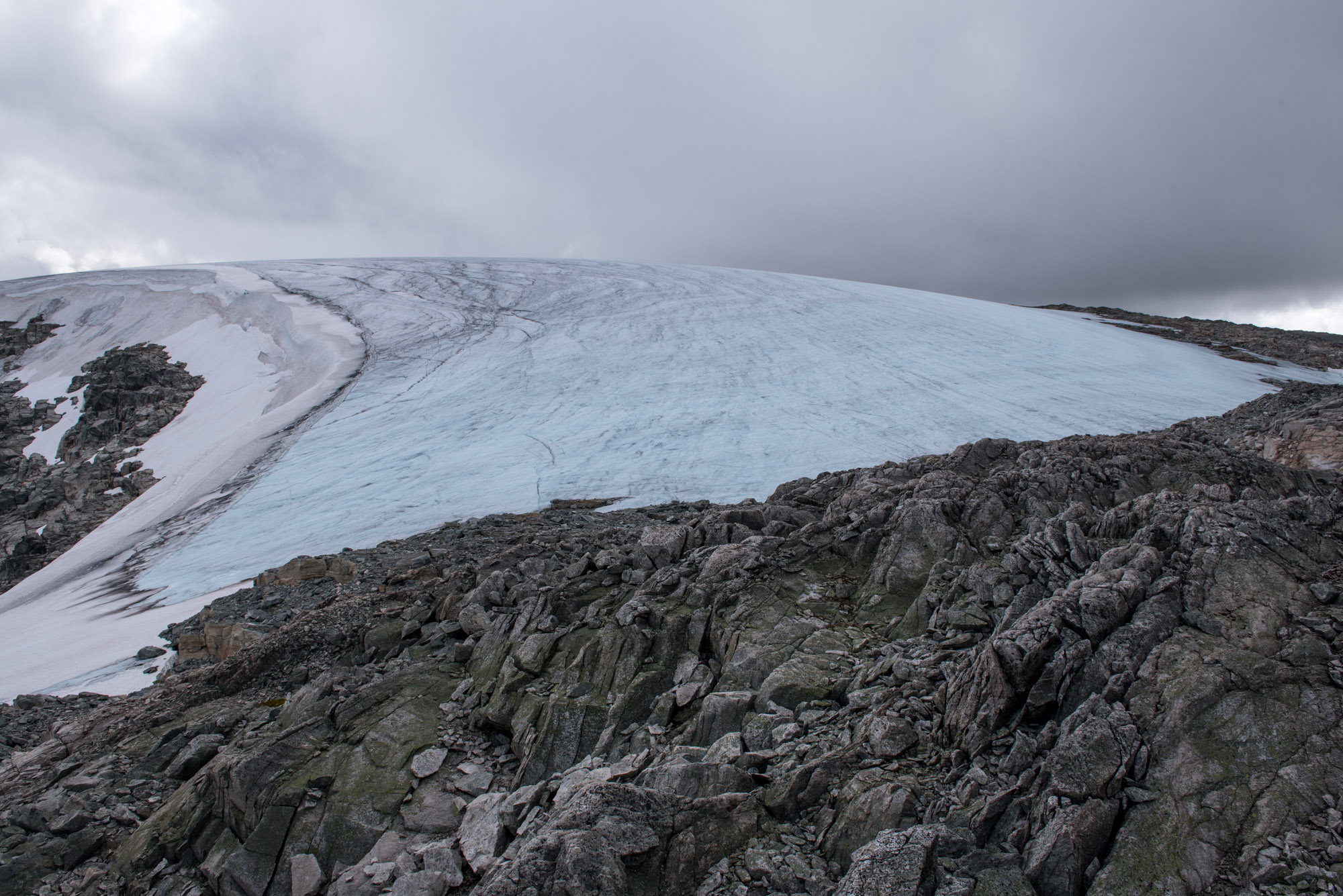
The relatively warm period we are in right now is called the Holocene. It started when the huge ice sheets had melted. By about 7800 before present, Spørteggbreen had completely melted (Andresen 2015). In the following millennia, the glacier was absent (according to Andresen) or had short-lived revivals (Nesje et al., 2006).
Due to more snow or cooler summers, Spørteggbreen probably reformed some 5400 years ago (Laumann & Nesje, 2014). But it must have remained small at first, as in took another 4000 years for the western part to recover and drain into Geisdalsvatnet (Andresen 2015).
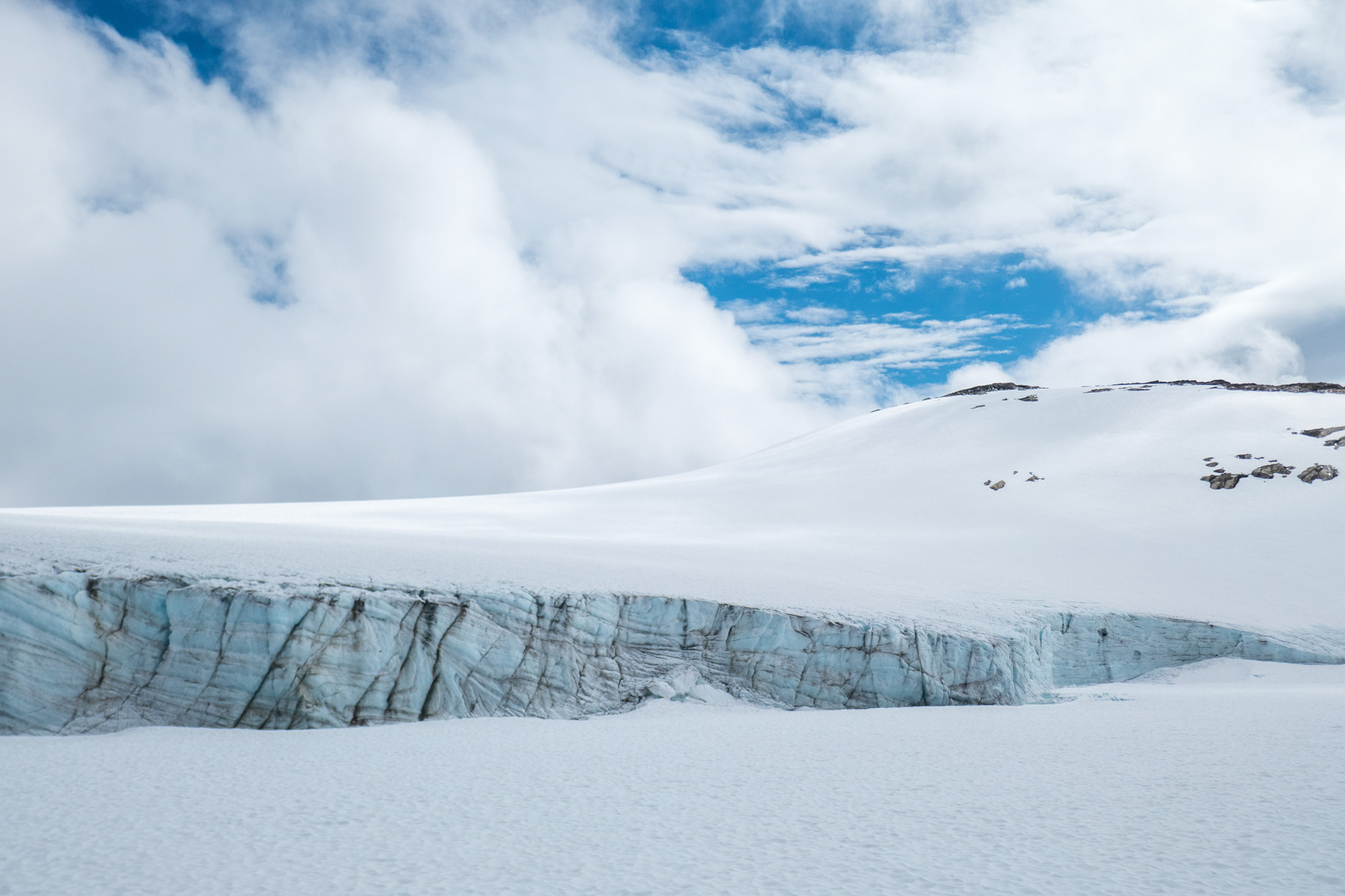
Spørteggbreen was especially extensive in the 18th and 19th century, when climate was cooler. The plateau glacier grew to 38 km2, twice as big as presently. Its outlet glaciers, like Leirbotnbreen in the north and Geisdalsbreen in the west, extended much further down. The latter might have reached its furthest point in 1825 (Andresen 2015). The 20th century saw moderate retreat. Somewhere in the period 1970-1980 the southwestern corner of the plateau glacier got detached from the rest and is calving into an expanding lake since then.
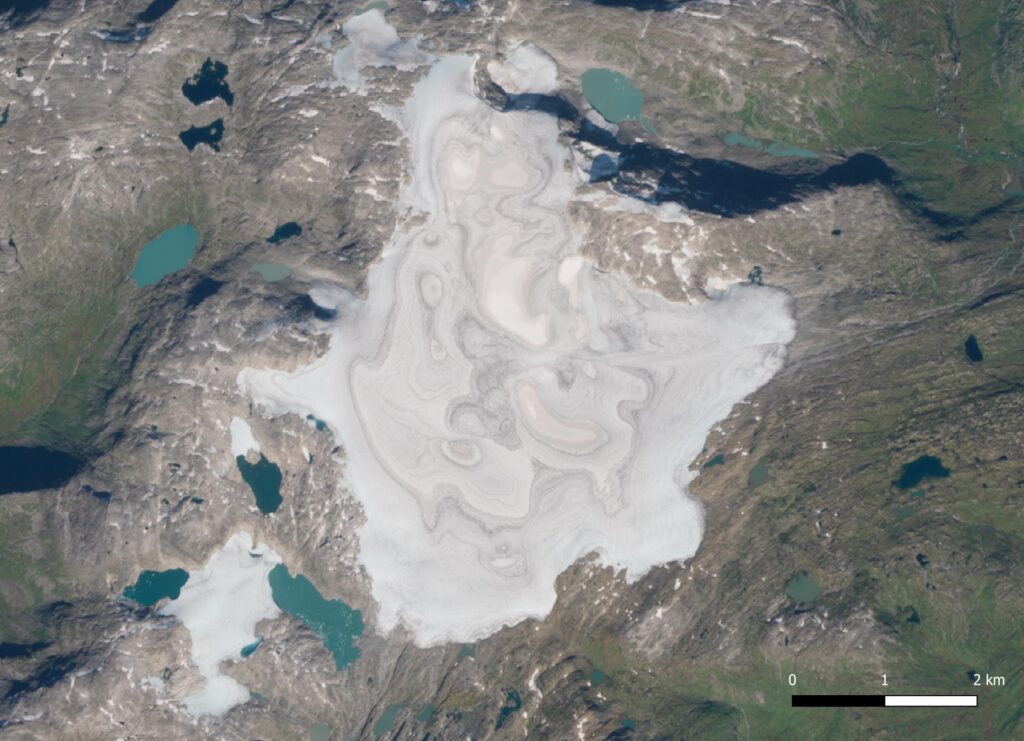
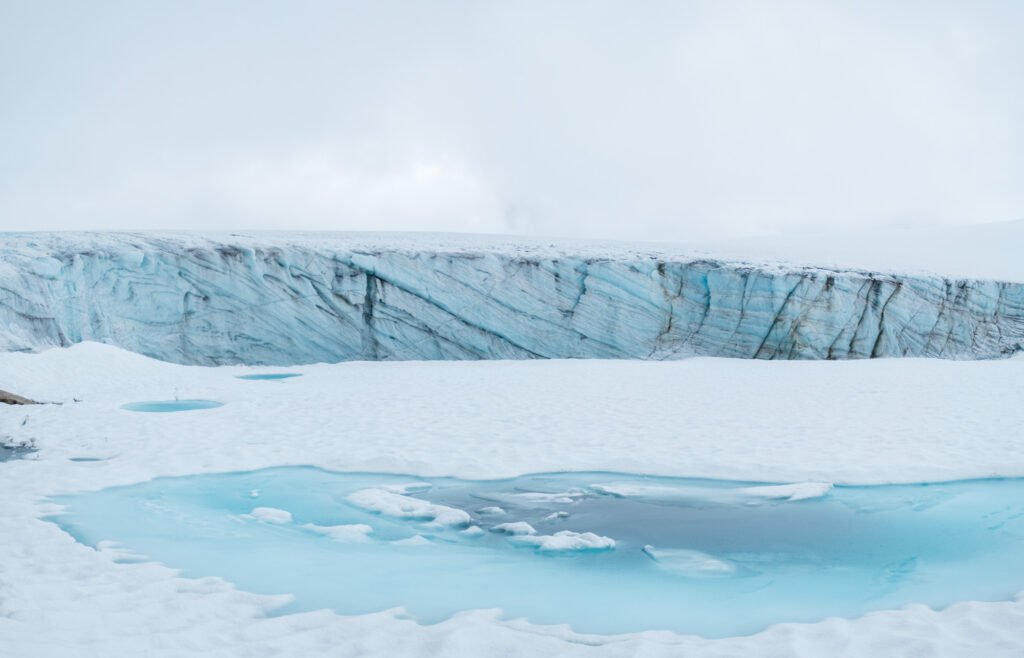
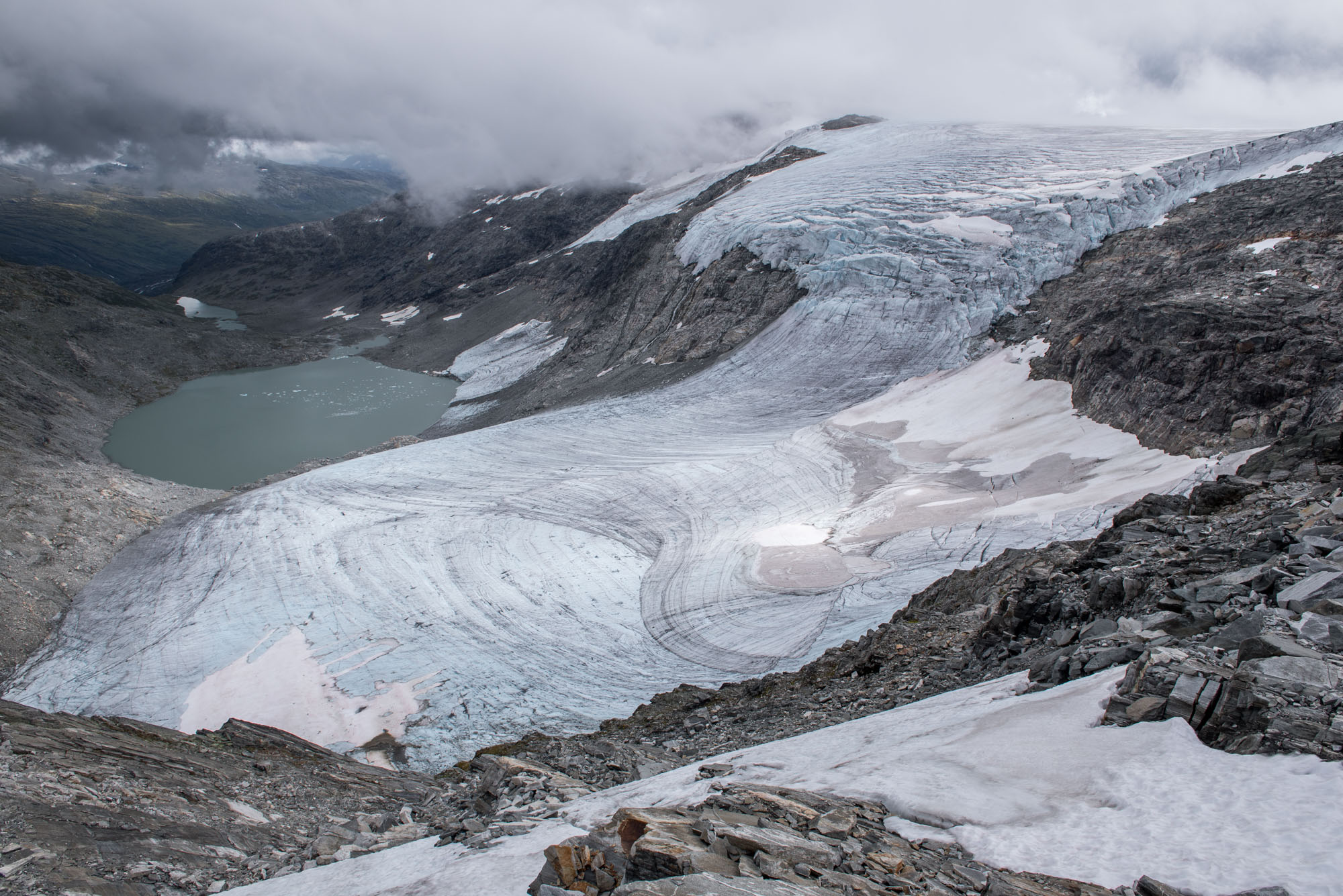
From the onset of the 21th century melt rates increased. Leitbotnbreen in the north disappears rapidly and its icefall is getting narrower. Its snout lowered by 30-40 m in the period 2011-2020. But melt is not confined to the edges. Even the top of the 1750 m high dome of ice is frequently free of snow at the end of summer.
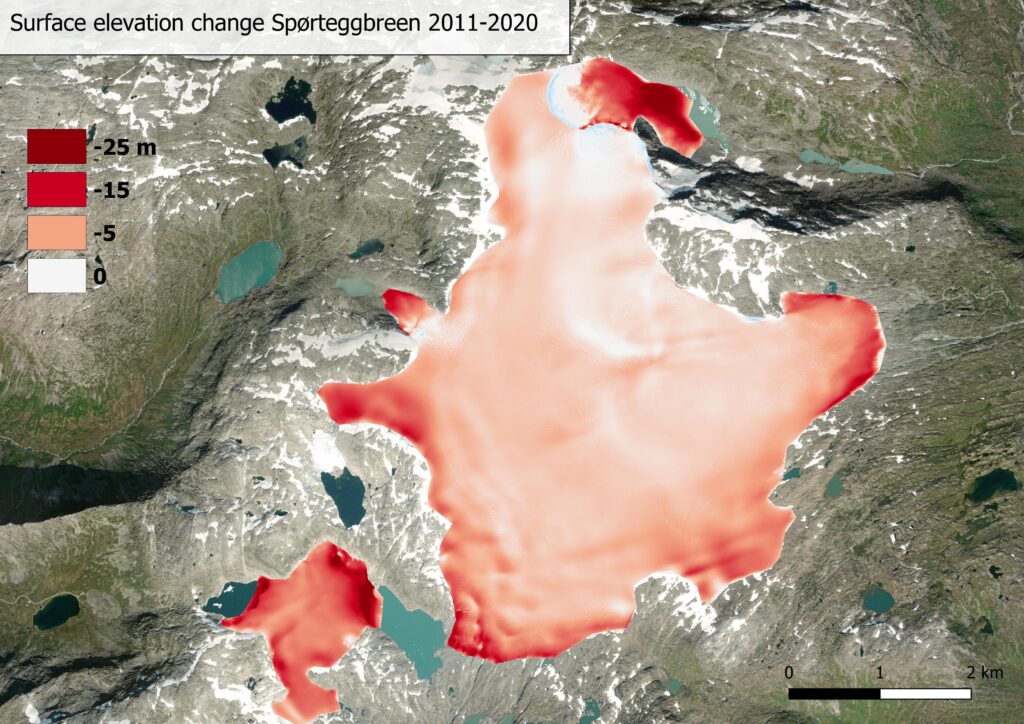
Because the ice even melts at the top of the plateau glacier, the entire surface is lowering. A comparison of elevation data from 2011 and 2020 reveals that melt ranged from 40 m along the edges (calving dead ice) to a few meters in the center.
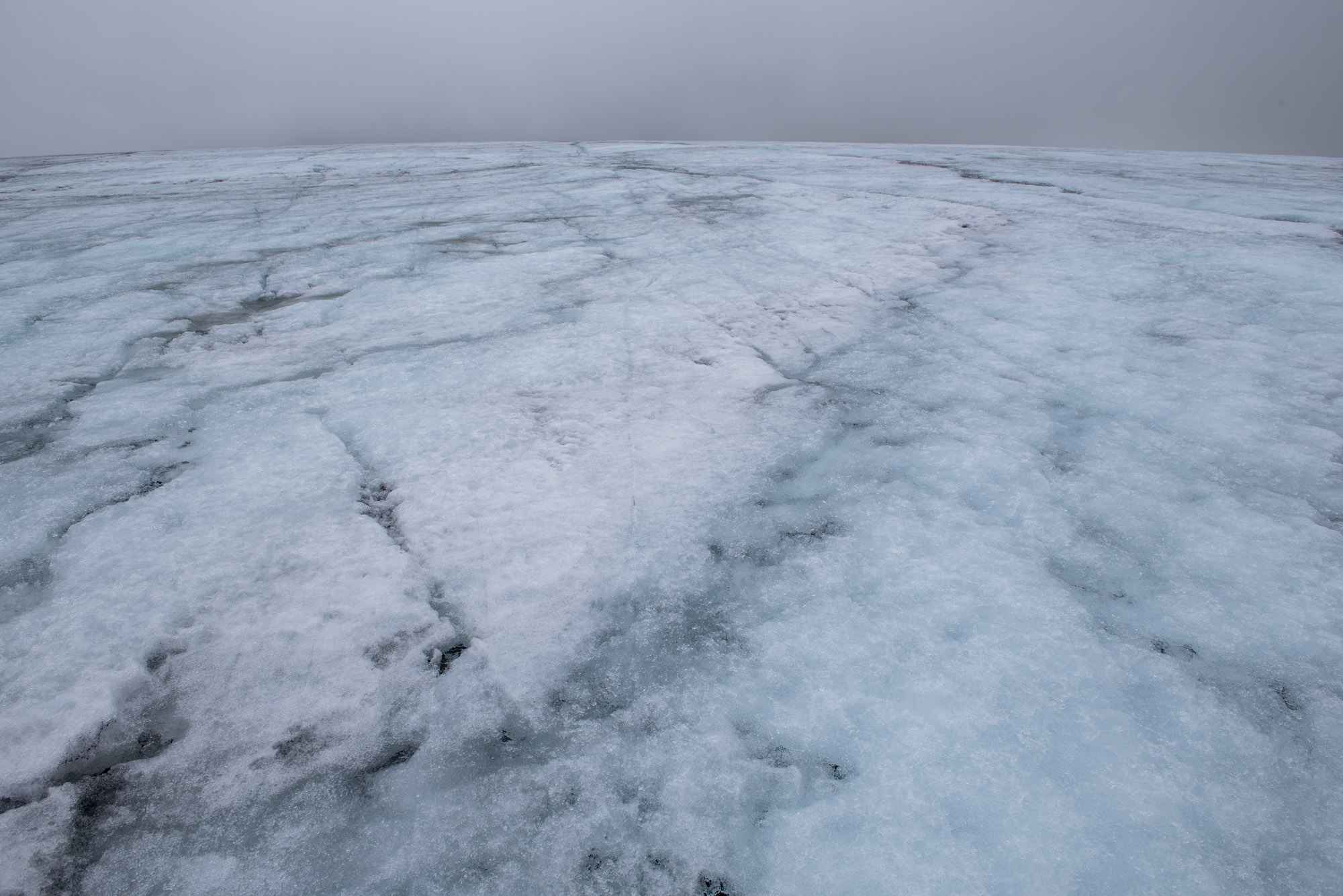
Thanks to the thick ice cover, parts of Spørteggbreen could remain present throughout this century if melt rates stay on 2011-2020 levels. Laumann and Nesje (2014) drew the same conclusion in their study on the future evolution of the glacier. However, summers in which the glacier is completely deprived of snow seem to become the new standard. That would be devastating for Spørteggbreen. It can’t wait for the next Ice Age to kick off!
Search within glacierchange: